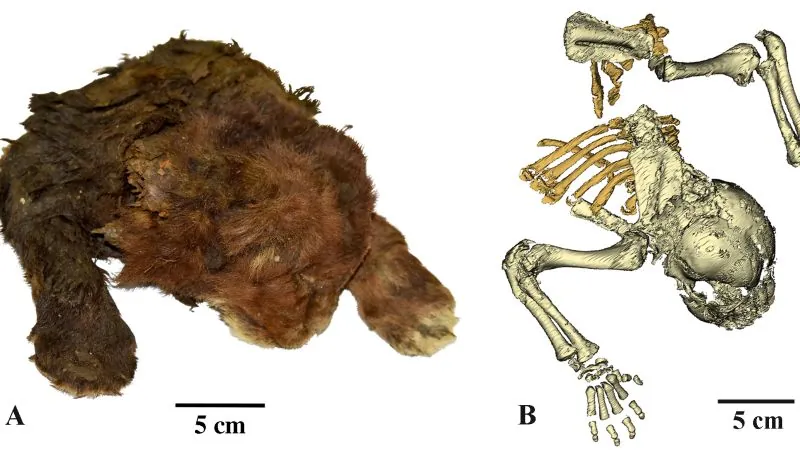
Unprecedented Discovery: Mummified Saber-Toothed 'Kitten' Found in Siberia!
2024-11-18
Author: Jessica Wong
A groundbreaking discovery has taken the paleontological community by storm—an exquisitely preserved mummified cub of the saber-toothed cat species Homotherium latidens has been unearthed in Siberia. This remarkable find is the first known mummy of a saber-toothed cat and is shedding new light on the biology and appearance of these prehistoric predators.
Found near the Badyarikha River in Yakutia, the cub was preserved in the region’s permafrost and is believed to be over 35,000 years old, dating back to the Pleistocene epoch. The mummy boasts an impressive state of preservation, allowing scientists a rare glimpse into the characteristics of saber-toothed cats that roamed during the last Ice Age. The cub's soft tissues, including abundant fur and flesh, were nearly intact, with its dark brown fur measuring between 0.8 to 1.2 inches (20 to 30 millimeters) long and remarkably soft to the touch.
Lead researcher Alexey V. Lopatin of the Borissiak Paleontological Institute expressed his exhilaration, noting how witnessing such a preserved specimen is a “fantastic feeling.” This discovery offers a unique opportunity to understand not just the exterior features of the saber-toothed cat, known for its iconic elongated canines—some measuring up to 8 inches (20 centimeters)—but also insights about its musculature and potential hunting strategies.
While similar ice age mummies, such as woolly mammoths and rhinos, are more commonly seen in this region, mummified cats are extremely rare. Before this find, only two mummies of the cave lion Panthera spelaea were known to exist. In Lopatin's words, "Now, we have added the Homotherium cub to this list," further elevating the significance of this find.
The extraordinary details of the cub's forelimbs are particularly noteworthy. Its front paws retained their claws and the fleshy pads that are reminiscent of modern house cats. Additionally, based on comparisons with modern feline anatomy, scientists have determined that the cub was approximately 3 weeks old at the time of its death.
In terms of physical characteristics, the cub exhibited several differences from modern lion cubs: it had a darker coat, smaller ears, and a more massive neck and mouth, suggesting that its anatomy was uniquely adapted for its role as a formidable predator. Paleontologist Jack Tseng commented on how this find revolutionizes our understanding of saber-toothed anatomy, emphasizing the significance of seeing such features preserved in flesh rather than through mere fossil analysis.
This discovery does not just add another chapter to the story of saber-toothed cats; it also enhances our understanding of the evolutionary lineage of felines as a whole. Genetic studies suggest that the Homotherium genus diverged from other ancient felines around 18 million years ago, meaning this cub is not just a relic of the past but a key piece of the puzzle in understanding feline evolution.
As scientists prepare to extract DNA from the mummy for further study, this extraordinary find is not only sparking excitement among researchers but also inviting the public to marvel at the mysteries of the ancient world. Stay tuned for more updates as we uncover the secrets held by this 35,000-year-old saber-toothed "kitten"!


 Brasil (PT)
Brasil (PT)
 Canada (EN)
Canada (EN)
 Chile (ES)
Chile (ES)
 España (ES)
España (ES)
 France (FR)
France (FR)
 Hong Kong (EN)
Hong Kong (EN)
 Italia (IT)
Italia (IT)
 日本 (JA)
日本 (JA)
 Magyarország (HU)
Magyarország (HU)
 Norge (NO)
Norge (NO)
 Polska (PL)
Polska (PL)
 Schweiz (DE)
Schweiz (DE)
 Singapore (EN)
Singapore (EN)
 Sverige (SV)
Sverige (SV)
 Suomi (FI)
Suomi (FI)
 Türkiye (TR)
Türkiye (TR)